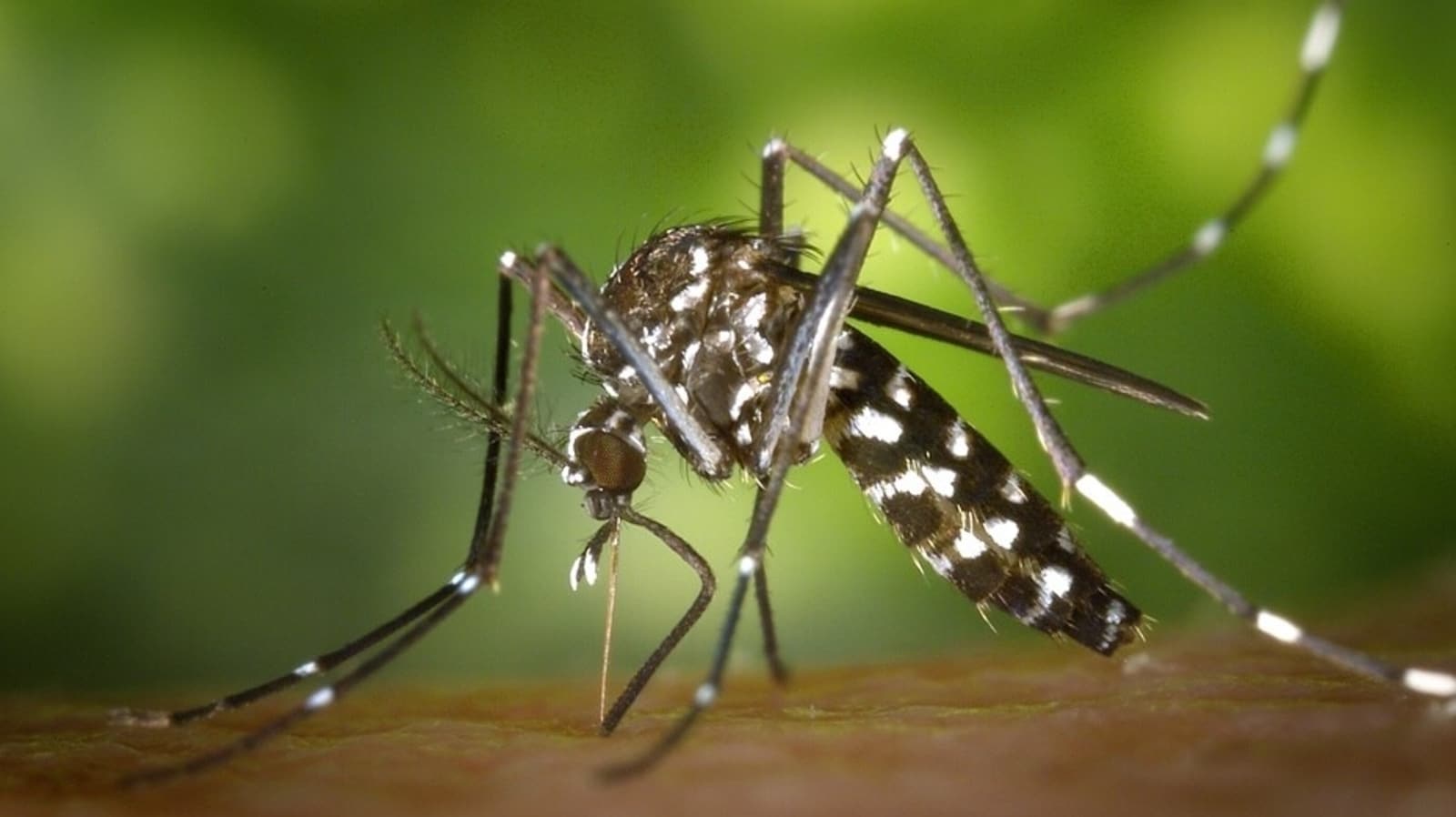Asian Tiger mosquito or Aedes albopictus, an aggressive daytime biter that feeds on humans and occasionally on other mammals can lead to potentially fatal complications in humans. Also known as forest mosquitoes, they are originally from Southeast Asia but have now spread to European countries and USA with movement of goods and international travel. According to a Daily Star report, a 27-year-old man in Germany slipped into coma, had his two toes amputated apart from going through 30 surgeries after a bite from Asian Tiger mosquito. According to the report, the bite led to a malignant bacterium that ate away almost halfway up his left thigh, and the person had to undergo skin transplantation to remove an abscess formed in the region. (Also read: What is DENV-2, the deadly dengue variant that is spreading fast; know symptoms, causes, treatment)
Facts about Asian tiger mosquitoes
Asian tiger mosquitoes, also known as forest mosquitoes, are an exotic species that get their “tiger” name from the single white stripe down the centre of their head and back. Originally from Southeast Asia, this daytime-biting insect can transmit harmful diseases like Eastern Equine Encephalitis (EEE), Zika virus, West Nile virus, Chikungunya and dengue fever. In the past few centuries, however, this species has spread to European countries and United States of America through the transport of goods and international travel.
“Asian tiger mosquito or Aedes albopictus is a forest species that has adapted to the urban environment. It is an aggressive daytime biter that feeds on humans but can feed on many other mammals. This is a very similar species to Aedes aegypti and can be mistaken for the latter when the scales and other morphological markings are rubbed off. To differentiate them apart, the clypeus on Aedes aegypti has pale scales, whereas that of Aedes albopictus is unscaled and entirely black,” says Dr Ajay Agarwal, Director and Head Internal Medicine, Fortis Hospital Noida.
Asian tiger mosquito illnesses
Dr Ajay Agarwal shares 5 deadly illnesses you can get from the bite of Asian tiger mosquito:
1. Dengue
After Aedes Aegypti, Aedes albopictus is one of the important vectors of Dengue fever in India especially in North-Eastern states and rural areas. Severe forms of Dengue fever such as Dengue shock syndrome presents with symptoms such as shock, bleeding, metabolic acidosis and given the high incidence of the disease in India have significant associated mortality and morbidity with the disease.
2. Chikungunya
Chikungunya is a debilitating, but non-fatal, viral illness that is spread by the bite of infected mosquitoes. It resembles dengue fever. Chikungunya virus is primarily transmitted to people through the bite of an infected mosquito, mainly Aedes aegypti and Aedes albopictus. It resembles dengue fever with severe joint pain (arthritis) as the most common feature of the disease. Chikungunya occurs mainly in Africa, India, and Southeast Asia. Although most people recover at home with anti-inflammatory drugs some develop persistent arthritis requiring therapy.
3. West Nile fever
West Nile fever can be defined as WNV disease that causes fever and nonspecific symptoms (eg, headache, muscle aches, rash, neck stiffness, vomiting) without any evidence of brain/meningeal involvement. However, more serious form of the disease West Nile Encephalitis can cause mental status changes, confusion, lethargy, seizures, local paraesthesia, and/or movement disorders with 9% of neuroinvasive disease cases resulting in death. The case-fatality ratio increased with
increasing age. The primary vector of the disease is culex rarely aedes. The febrile illness and sporadic encephalitis were found in parts of Africa, Asia, Europe and off late USA. Treatment of West Nile encephalitis (WNE) consists of prevention, followed then by supportive care.
The mainstay of prevention is limiting personal mosquito-bite exposure.
4. Eastern Equine Encephalitis
Eastern Equine Encephalitis (EEE) is caused by an arthropod borne alphavirus. Invariably fatal in equines although uncommon in humans but likewise associated with high rate of mortality and morbidity. Initial symptoms include fever, headache, and some abdominal pain with diarrhoea but often progress rapidly to confusion, somnolence, or even coma.
EEE is prevalent in USA, gulf coastal areas (eg, Mexico, northern coast of South America, Caribbean).
The average duration of hospitalisation is 16-20 days. The prognosis in infected patients is extremely poor; 50-70% of patients die. The morbidity rate is approximately 90%, representing a wide range of mild to severe impairment. Only 10% of patients fully recover.
5. Zika virus
Zika virus infection usually causes a mild, self-limited illness but Zika virus has potential for sexual transmission and has been associated with congenital brain abnormalities in pregnant women infected during the first trimester. Both Aedes aegypti (major) and Aedes albopictus (minor) were recognized as vectors for the transmission of Zika virus. The global prevalence of Zika virus infection has not been widely reported owing to asymptomatic clinical course, clinical resemblance to other infection with other viruses (dengue, chikungunya), and difficulty in confirming diagnosis. Although most cases of Zika virus infection are mild and self-limited, serious neurological complications have been reported in rare cases, including Guillain-Barré syndrome. In addition, adverse pregnancy outcomes and congenital Zika syndrome due to vertical transmission of Zika virus is of greatest concern with poor long-term prognosis.


